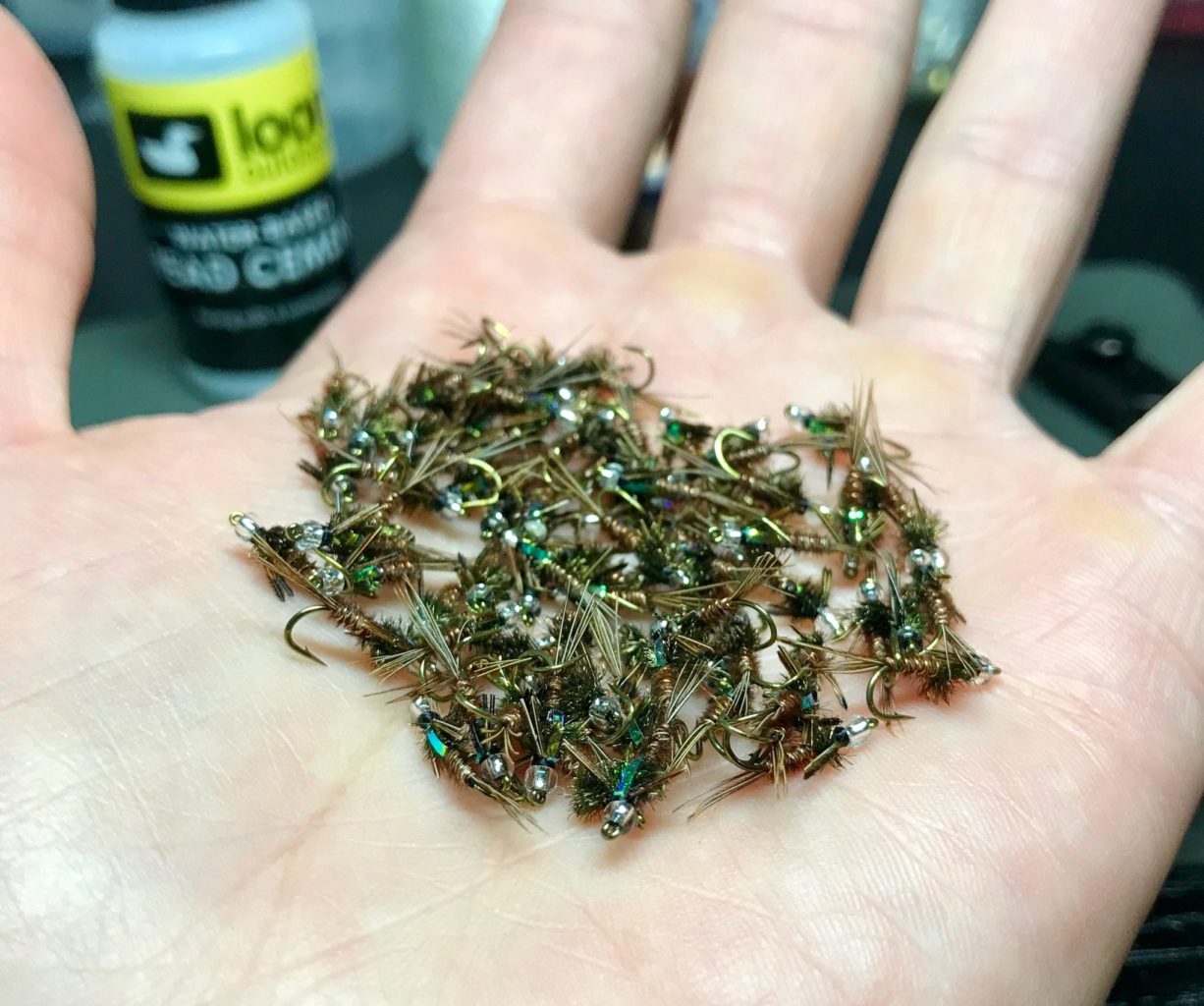Practice, Practice, Practice
Welcome to the second week of my tips for beginning fly-tiers! Today’s tip may seem a bit silly, but it never hurts to rehash things that are completely obvious. The old cliché “practice makes perfect” is what separates a good fly tier from a great one! The more you practice, the better your fly tying skills become. I suggest picking one pattern that you use a lot on your local waters (i.e. Pheasant Tail, Black Beauty, WD-40, Hare’s Ear, etc.) and master it before you move on to the next pattern.
My advice is to start with a larger hook, for example, an 18 instead of a 22. This will allow you to manage proportions of the fly easier. Make sure you take your time and focus on each fly, striving for perfection! If you feel the fly is tied poorly, cut the materials off the hook and re-tie it. The Pheasant Tail is one of the best trout patterns of our time. It imitates a wide range of mayfly nymphs including blue-winged olives, pale morning duns, Tricos and red quills.

The Pheasant Tail is one of the best trout patterns of our time. It imitates a wide range of mayfly nymphs including blue-winged olives, pale morning duns, Tricos and red quills.
Practice, makes perfect
As a beginner, I suggest tying one dozen flies of each pattern (instead of tying just a few) – trying to make each one identical. Manage your proportions (tails, abdomens, wing cases, etc.) and do not crowd the hook eye. This is one of the biggest hurdles to overcome when you begin tying flies. If the fly is too bulky, and the hook eye is crowded; it leads to frustration on the river. There is nothing worse than trying to get a thin tippet through a clogged hook eye when there are feeding fish in front of you!
After you get one pattern mastered, vary your sizes and colors to add some depth to your fly selection. A Pheasant Tail is a good example. It can be tied in a wide range of sizes and colors to imitate winter and yellow sally stoneflies as well as several different mayflies.
Once again, I strongly recommend tying a dozen of each size and color. By doing this, it enables you to stockpile several different sizes and colors to fill in the holes down the road. At this point, you should start to feel comfortable with a particular pattern and move on the next pattern of choice. When I first started fly tying, I didn’t get into a groove until I tied several dozen of each pattern.
Check back next week for the third installment of Tailwater Junkie’s tips for beginner tiers!
